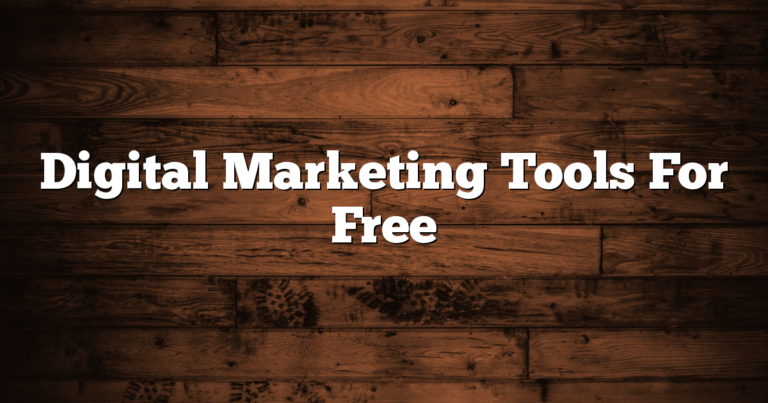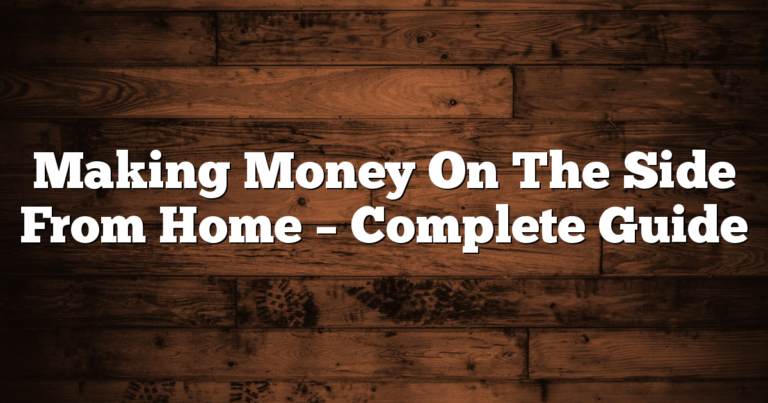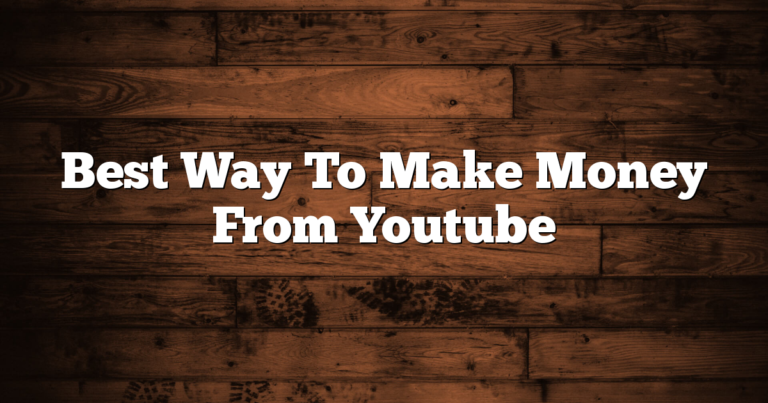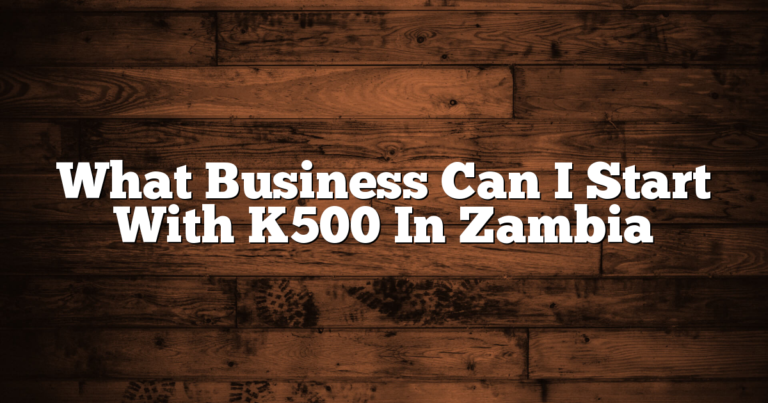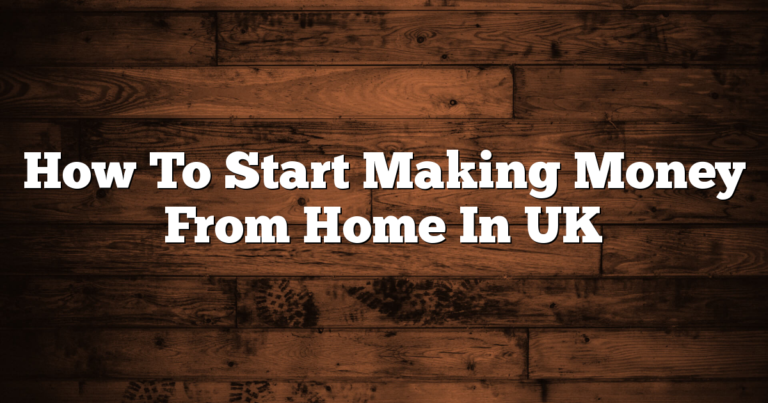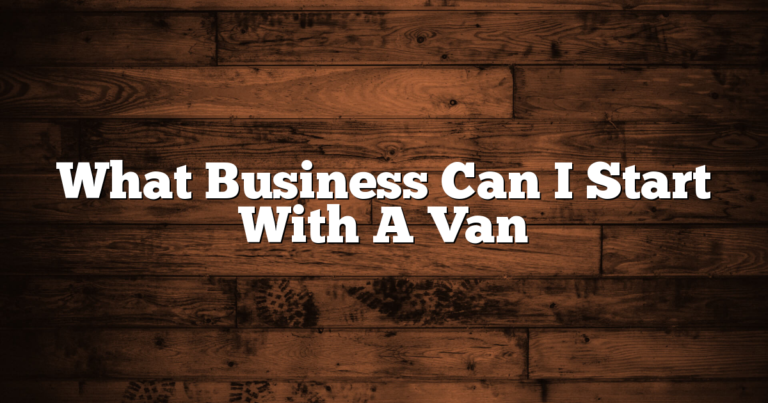How To Start Making Money From Facebook
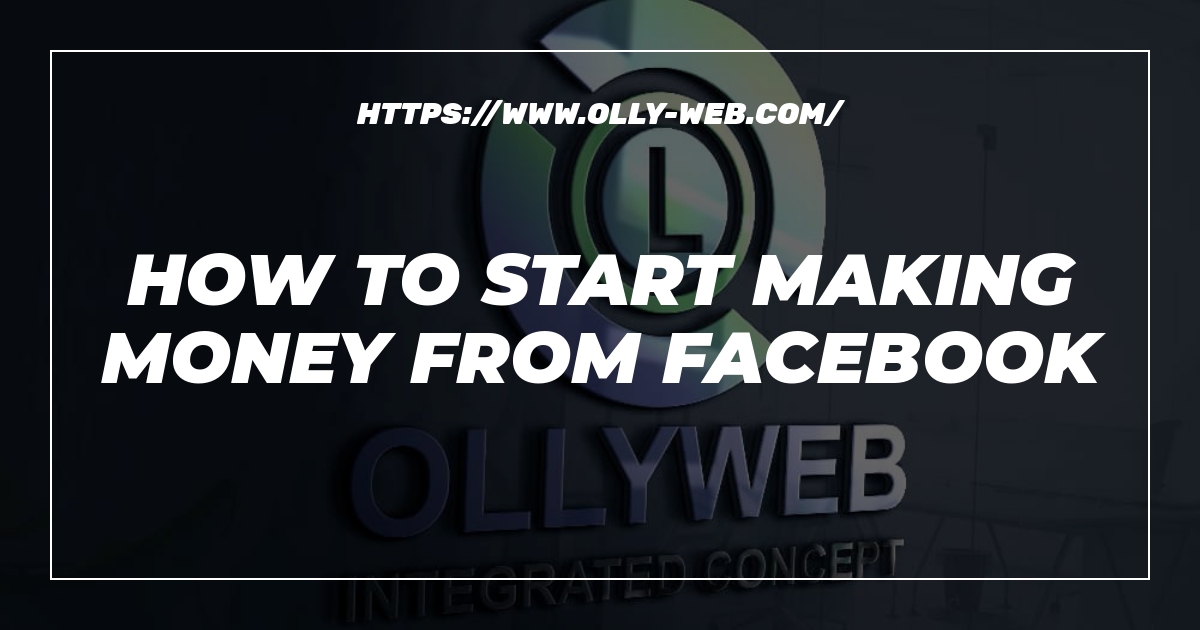
Hey there, fellow hustlers! Are you ready to unlock the secret to making some serious cash from the comfort of your own Facebook feed? Well, get ready to dive into the world of moolah-making on the world's favorite social media platform. Today, we're going to spill the beans on how you can turn your Facebook account into a money-making machine. So, grab your favorite snack, sit back, and let's get this money train rolling!
Setting up a Facebook Business Page
So, you wanna set up a Facebook Business Page, huh? Well, you've come to the right place, my friend! Let me break it down for you and give you the lowdown on how to get started.
First things first, you gotta have a personal Facebook account before you can create a Business Page. If you don't have one yet, no worries, just hop on over to Facebook and sign up. It's as easy as pie, trust me.
Once you've got your personal account sorted, it's time to dive into the world of business. Head on over to the Facebook Business Page creation page and click on that shiny blue button that says “Create a Page.” Now, here's where the fun begins. You'll be asked to choose a category for your business, like “Local Business,” “Brand or Product,” or “Community or Public Figure.” Pick the one that best suits your business vibes, and don't stress too much about it. You can always change it later if you have a change of heart.
Alright, now that you've chosen your category, it's time to give your Business Page a name. This is where you gotta get creative, my friend. Think of something catchy, memorable, and representative of your brand. You want people to see your page and be like, “Damn, I gotta check this out!” Once you've nailed down the perfect name, hit that “Get Started” button, and voila! You've officially set up your Facebook Business Page. Now it's time to start customizing it, adding some killer content, and getting those likes and follows rolling in. Good luck, my friend, and may your business thrive in the world of Facebook!
Identifying a Profitable Niche or Target Audience
So, you're looking to identify a profitable niche or target audience, huh? Well, let me tell you, my friend, this is a crucial step in any business venture. You see, finding the right niche or target audience is like finding the perfect pair of jeans that fit just right – it's all about finding that sweet spot where you can make some serious moolah.
Now, let's break it down. First things first, you gotta do your research. I'm talking about diving deep into the world of market analysis, trends, and consumer behavior. You need to understand what makes people tick, what gets them excited, and most importantly, what problems they're facing that you can solve. This is where you can really make a difference, my friend. Find that gap in the market, that untapped need, and boom! You've hit the jackpot.
Once you've done your research, it's time to narrow down your options. You don't want to be a jack of all trades and a master of none, right? So, think about what you're passionate about, what you're good at, and what aligns with your values. This is where you can bring your unique flavor to the table, my friend. Don't be afraid to think outside the box and carve out your own niche within a niche. Remember, it's all about standing out from the crowd and offering something that no one else can.
Now, here comes the fun part – testing the waters. Once you've identified your potential niche or target audience, it's time to put your ideas to the test. Start small, my friend. Dip your toes in the water and see how people respond. Launch a pilot project, run some surveys, or even create a minimum viable product. This is where you can gather valuable feedback and make any necessary tweaks before going all-in. And hey, don't be discouraged if things don't go as planned at first. It's all part of the process, my friend. Keep learning, adapting, and hustling, and before you know it, you'll be swimming in profits.
So, there you have it – the key to identifying a profitable niche or target audience. It's all about doing your research, finding your passion, and testing the waters. Remember, my friend, success doesn't happen overnight. It takes time, effort, and a whole lot of grit. But hey, with the right niche and target audience, you'll be well on your way to building a thriving business. Good luck, and may the profits be ever in your favor!
Creating Engaging and Valuable Content
So, let's talk about creating engaging and valuable content. You know, in this digital age, where attention spans are shorter than ever, it's crucial to grab your audience's attention and keep them hooked. And the best way to do that is by creating content that is not only engaging but also valuable.
When we say engaging, we mean content that captivates your audience, makes them want to read, watch, or listen to what you have to say. It's like a good story that keeps you on the edge of your seat, eagerly waiting to find out what happens next. Engaging content can be in the form of blog posts, videos, podcasts, or even social media posts. The key is to understand your audience and tailor your content to their interests and needs.
But engaging content alone is not enough. It also needs to be valuable. What do we mean by valuable? Well, valuable content is content that provides something of worth to your audience. It could be information that educates, advice that helps solve a problem, or entertainment that brings joy and laughter. The value of your content lies in its ability to make a positive impact on your audience's lives. And when your audience finds value in your content, they are more likely to trust you, engage with you, and become loyal followers.
So, how do you create engaging and valuable content? Well, it all starts with understanding your audience. Who are they? What are their interests, needs, and pain points? Once you have a clear picture of your audience, you can start brainstorming ideas for content that will resonate with them. Remember, it's not about you, it's about them. Put yourself in their shoes and think about what they would find interesting, helpful, or entertaining.
Next, you need to think about the format of your content. Will it be a blog post, a video, a podcast, or something else? Each format has its own strengths and weaknesses, so choose the one that best suits your message and your audience's preferences. And don't forget about the visual aspect of your content. Use eye-catching images, videos, or infographics to make your content more engaging and memorable.
Finally, make sure your content is well-written, well-produced, and well-presented. Pay attention to grammar, spelling, and punctuation. Use clear and concise language that is easy to understand. And don't forget to proofread and edit your content before publishing it. Remember, quality is key when it comes to creating engaging and valuable content.
So, there you have it. Creating engaging and valuable content is all about understanding your audience, providing them with something of worth, and presenting it in a captivating and well-executed manner. It may take some time and effort, but the rewards are well worth it. So go ahead, get creative, and start creating content that will leave your audience wanting more.
Building a Strong Online Presence and Brand Image
So, you wanna build a strong online presence and brand image, huh? Well, you've come to the right place, my friend! In this digital age, having a solid online presence is crucial for any business or individual looking to make their mark. It's like having your own virtual storefront that's open 24/7, allowing you to reach a global audience and showcase what you're all about. But how do you go about it? Let's dive in and explore some key strategies to help you build that killer online presence and brand image.
First things first, you gotta know your audience, man. Who are you trying to reach? What are their interests, needs, and desires? Understanding your target audience is like having the secret sauce to success. It helps you tailor your content, messaging, and overall brand image to resonate with the people you want to attract. So, do your research, dig deep, and get to know your audience like the back of your hand.
Next up, you gotta create killer content that speaks to your audience. I'm talking about content that's informative, entertaining, and downright irresistible. Whether it's blog posts, videos, social media updates, or podcasts, make sure your content is top-notch and reflects your brand's unique voice and personality. And don't forget to optimize it for search engines, my friend. Use those keywords wisely and watch your online presence soar to new heights.
Last but not least, you gotta be consistent, my dude. Building a strong online presence and brand image is not a one-time thing. It's an ongoing process that requires dedication and consistency. So, show up regularly, engage with your audience, and keep the conversation going. Be authentic, be genuine, and let your brand shine through in everything you do. Remember, Rome wasn't built in a day, and neither will your online presence. But with time, effort, and a sprinkle of digital magic, you'll be well on your way to building a strong online presence and brand image that'll make heads turn.
Utilizing Facebook Ads and Sponsored Posts
So, let's talk about utilizing Facebook Ads and Sponsored Posts. Now, I know what you're thinking – “Oh great, another spiel about social media advertising.” But hear me out, because there's actually a lot more to it than meets the eye. Facebook Ads and Sponsored Posts can be incredibly powerful tools for reaching your target audience and driving engagement.
First things first, let's break down what exactly Facebook Ads and Sponsored Posts are. Facebook Ads are paid advertisements that appear in users' news feeds or on the right-hand side of the screen. They can be highly targeted based on factors like demographics, interests, and behaviors, allowing you to reach the people most likely to be interested in your product or service. On the other hand, Sponsored Posts are organic posts that you boost with advertising dollars to increase their reach and visibility. They blend seamlessly into users' news feeds, making them feel more like a natural part of the browsing experience.
Now, let's dive into the benefits of utilizing these tools. One of the biggest advantages is the ability to reach a massive audience. With over 2.8 billion monthly active users, Facebook provides an unparalleled opportunity to get your message in front of a wide range of people. Plus, the targeting options mentioned earlier allow you to narrow down your audience even further, ensuring that your ads are seen by the right people at the right time.
Another major benefit is the level of control and customization you have over your ads. Facebook Ads Manager provides a user-friendly interface where you can create, manage, and track your campaigns. You can choose from a variety of ad formats, such as image ads, video ads, carousel ads, and more. You can also set your budget, schedule your ads to run at specific times, and track key metrics like impressions, clicks, and conversions. This level of control allows you to optimize your campaigns and make data-driven decisions to maximize your return on investment.
So, how do you get started with utilizing Facebook Ads and Sponsored Posts? Well, the first step is to define your goals and target audience. What do you want to achieve with your ads? Who are you trying to reach? Once you have a clear understanding of your objectives, you can start creating your ads using Facebook Ads Manager. Remember to choose compelling visuals, write engaging copy, and include a strong call-to-action. And don't forget to monitor your campaigns regularly and make adjustments as needed to ensure you're getting the best results.
In conclusion, Facebook Ads and Sponsored Posts can be incredibly valuable tools for businesses and individuals looking to reach a wider audience and drive engagement. With their targeting options, customization features, and vast user base, they offer a unique opportunity to connect with the right people at the right time. So, don't dismiss them as just another social media advertising tactic – give them a try and see the impact they can have on your marketing efforts.
Implementing Affiliate Marketing Strategies
So, you want to know more about implementing affiliate marketing strategies? Well, you've come to the right place! Affiliate marketing is a powerful tool that can help businesses expand their reach and increase their sales. It's all about partnering with individuals or other businesses (affiliates) who promote your products or services in exchange for a commission. But how do you actually go about implementing these strategies? Let's dive in and find out!
First things first, you need to identify your target audience. Who are the people most likely to be interested in your products or services? Understanding your audience is crucial because it will help you tailor your affiliate marketing strategies to reach the right people. Once you have a clear picture of your target audience, you can start searching for affiliates who have a similar audience. Look for influencers, bloggers, or websites that align with your brand and have a strong following. These are the people who can help you reach your target audience effectively.
Next, you need to establish clear goals and objectives for your affiliate marketing campaign. What do you hope to achieve through this strategy? Is it increased brand awareness, higher sales, or both? Setting specific and measurable goals will help you track your progress and make adjustments along the way. For example, if your goal is to increase sales, you can track the number of conversions or the revenue generated through your affiliate links. This data will give you valuable insights into the effectiveness of your strategies and allow you to optimize them for better results.
Once you have your target audience and goals in place, it's time to create compelling content and promotional materials for your affiliates. Remember, your affiliates are essentially your brand ambassadors, so you want to provide them with the tools they need to promote your products or services effectively. This could include banners, product images, promotional videos, or even exclusive discount codes. The key here is to make it as easy as possible for your affiliates to promote your brand. The more enticing and user-friendly your promotional materials are, the more likely they are to be shared and generate sales.
So, there you have it! Implementing affiliate marketing strategies involves understanding your target audience, setting clear goals, and providing your affiliates with compelling promotional materials. By following these steps, you'll be well on your way to harnessing the power of affiliate marketing and growing your business. Good luck!
Exploring Ecommerce Opportunities on Facebook
So, let's talk about exploring ecommerce opportunities on Facebook. Now, we all know that Facebook is not just a place to share cute cat videos and stalk your exes. It's also a goldmine for businesses looking to expand their online presence and reach a wider audience. And when it comes to ecommerce, Facebook offers a plethora of opportunities that you definitely don't want to miss out on.
First things first, let's talk about Facebook Shops. This feature allows businesses to create a fully customizable online store right on their Facebook page. It's like having your own little virtual boutique where you can showcase your products and make it super easy for your customers to browse and buy. And the best part? You don't need to be a tech genius to set it up. Facebook has made it incredibly user-friendly, so even if you're not the most tech-savvy person out there, you can still create a killer online store in no time.
But wait, there's more! Facebook also offers a nifty little feature called Marketplace. It's basically a virtual flea market where you can buy and sell all sorts of things. It's like having a garage sale, but without the hassle of setting up tables in your driveway. Whether you're looking to sell some vintage clothes, handmade crafts, or even your old gaming console, Marketplace is the place to be. And the best part? It's completely free to use! So if you're a small business or just someone looking to make some extra cash, this is definitely a platform you want to explore.
Now, let's not forget about Facebook ads. With over 2.8 billion monthly active users, Facebook has a massive audience just waiting to discover your products. And with their targeted advertising options, you can reach the exact people who are most likely to be interested in what you have to offer. It's like having your own personal marketing team, but without the hefty price tag. So if you're looking to boost your ecommerce game, Facebook ads are definitely worth considering.
So there you have it, folks. Facebook is not just a place to catch up with friends and share funny memes. It's also a treasure trove of ecommerce opportunities waiting to be explored. Whether you're a small business owner or just someone looking to make some extra cash, Facebook has got your back. So why not give it a shot and see where it takes you? Who knows, you might just strike gold!
Leveraging Facebook Groups and Communities
So, let's talk about leveraging Facebook Groups and Communities. Now, you might be thinking, “What's the big deal? It's just another social media platform.” But trust me, my friend, Facebook Groups and Communities are a goldmine when it comes to connecting with like-minded individuals and expanding your reach.
First things first, let's break it down. Facebook Groups are basically online communities where people with similar interests, hobbies, or goals come together to share ideas, ask questions, and support each other. It's like a virtual hangout spot where you can find your tribe. And the best part? You can join as many groups as you want, depending on your interests.
Now, why should you care about leveraging these groups? Well, let me tell you. These communities are a breeding ground for engagement and networking opportunities. You can connect with people who are genuinely interested in what you have to offer, whether it's a product, a service, or just your expertise. By actively participating in these groups, you can establish yourself as an authority in your niche and build trust with potential customers or clients.
But here's the thing, my friend. It's not just about joining groups and spamming them with your promotions. That's a big no-no. Instead, focus on providing value to the community. Share your knowledge, answer questions, and engage in meaningful conversations. This way, you'll naturally attract attention and people will be more inclined to check out what you have to offer. Remember, it's all about building relationships and fostering a sense of community. So, go ahead, dive into those Facebook Groups and Communities, and start leveraging them to grow your network and reach new heights!
Collaborating with Influencers and Partners
So, let's talk about collaborating with influencers and partners. Now, you might be wondering what the big deal is with this whole influencer thing. Well, let me break it down for you. Influencers are basically people who have a big following on social media and can sway their followers' opinions and behaviors. They have the power to make or break a brand, so it's no wonder that businesses are jumping on the influencer bandwagon.
When you collaborate with influencers, you're essentially tapping into their network of loyal followers. It's like having a friend with a massive group of friends who all trust their recommendations. By partnering up with influencers, you can leverage their influence to promote your products or services. It's a win-win situation. They get paid or receive freebies, and you get exposure to a whole new audience who might be interested in what you have to offer.
But it's not just about influencers. Collaborating with partners can also be a game-changer for your business. Partnerships allow you to tap into the expertise and resources of other businesses or individuals who share a similar target audience. By joining forces, you can create something bigger and better than what you could have done on your own. It's like a power couple, but for businesses.
When you collaborate with partners, you can pool your resources, share costs, and reach a wider audience. You can also benefit from their knowledge and experience, learning from each other's successes and failures. It's all about synergy, baby! Plus, partnering up with someone can add credibility and trust to your brand. It's like having a stamp of approval from someone who's already established in the industry.
So, whether you're teaming up with influencers or partnering with other businesses, collaboration is the name of the game. It's all about expanding your reach, tapping into new audiences, and creating something amazing together. So, go out there and find your perfect match. Together, you can conquer the world!
Tracking and Analyzing Performance Metrics
So, let's talk about tracking and analyzing performance metrics. Now, I know it may sound a bit technical, but trust me, it's not as complicated as it seems. Basically, when we talk about performance metrics, we're referring to the data and measurements that help us understand how well something is performing. It could be anything from a website's traffic to an athlete's speed or even a company's sales figures.
Now, why is tracking and analyzing these metrics so important? Well, think about it this way. Imagine you're driving a car without a speedometer. How would you know if you're going too fast or too slow? You wouldn't, right? The same goes for any endeavor, whether it's a business, a project, or even your own personal goals. Tracking and analyzing performance metrics give us the insights we need to make informed decisions and take actions that will lead to success.
So, how do we go about tracking and analyzing these metrics? Well, there are various tools and methods available, depending on what you're trying to measure. For example, if you're running an online business, you might use web analytics tools like Google Analytics to track website traffic, conversion rates, and user behavior. On the other hand, if you're an athlete, you might use wearable devices or specialized software to track your performance during training sessions or competitions.
Once you have the data, it's time to analyze it. This involves looking for patterns, trends, and correlations that can help you understand what's working and what's not. For instance, if you notice that your website's bounce rate is high, it could indicate that visitors are not finding what they're looking for, and you might need to make some changes to improve user experience. Similarly, if you're an athlete and you see a drop in your performance metrics, it could be a sign that you need to adjust your training regimen or seek professional advice.
So, you see, tracking and analyzing performance metrics is like having a compass that guides you towards success. It helps you stay on track, make informed decisions, and continuously improve. Whether you're a business owner, an athlete, or just someone trying to achieve personal goals, understanding and leveraging performance metrics can make a world of difference. So, don't underestimate the power of data, my friend. Embrace it, analyze it, and let it be your guide on the path to greatness.
Another post you might find useful is, How To Start Making Money From Feet Pics.
I've also written about How To Start Making Money From Facebook Reels, so feel free to check that out, or bookmark it for later!

